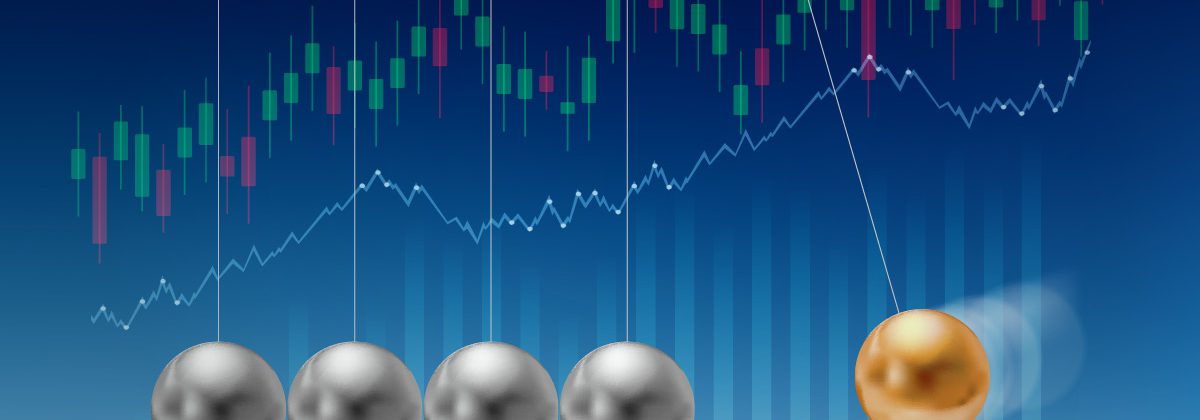Momentum Trading: How it Works and Top Strategies

Richard Driehaus, the father of momentum trading, pioneered the technique of riding a trend based on the momentum supporting it. He suggests losing the losers (poorly performing assets) and letting the winners ride while investing in the assets that are beginning to show momentum. For beginners, buying high can seem like a counterintuitive strategy, but it suits momentum trading.
“The stock market is like a woman. You observe her. You respond to her. And you respect her. That is not as easy as it sounds. Just ask my ex-wife.”
– Richard Driehaus
What is Momentum Trading?
Momentum trading is a popular short- and medium-term strategy to enter a trend after it sets in and exit right before a reversal. Traders identify a trend and anticipate its longevity by analysing the momentum. The longer a trend lasts, the higher the chances of gains.
Momentum trading differs from trend trading in that the former is a shorter-term approach. While momentum trading is more reactive to ongoing price fluctuations, trend trading involves sticking to a position despite momentary pullbacks and relies on broader market direction. Although momentum trading responds to the first sign of weakness in a trend, traders must focus on the strength of the trend and factors driving it and not just recent price changes.
Factors Influencing Price Momentum
The momentum of a trend is affected by three key factors:
- Trading Volume
The number of trades opened or closed within a given timeframe define the volume of the asset traded. This is called the liquidity of the asset. The higher the liquidity, the higher the chances of an order getting filled quickly.
- Price Volatility
The volatility of an asset’s price is the degree of change per unit of time (seconds/minutes/hours). Momentum traders look for assets with wider swing potential in the direction of the trend in within their trading timeframe. Volatility also plays a critical role in determining the exit and risk management price points.
- Timeframe
Momentum trading relies on the longevity of a trend. Therefore, traders focus on the potential of a trend continuing for the duration suitable to their trading style. This makes momentum trading more suitable for short-term strategies, such as day-trading and scalping, as well as medium-term position-trading.
Types of Momentum Trading Strategies
There are broadly two kinds of momentum trading techniques. While both capitalise on the continuation of a trend, they differ in their approach to selecting the asset to trade.
- Time-Series Momentum Trading
In this strategy, traders monitor individual assets. Once an asset reaches a defined threshold in the ongoing trend, they take a long position. The focus is entirely on the asset’s historical performance.
For instance, if a commodity has surged by 2% in the previous five trading sessions and momentum indicators are strong, traders may open a buy trade.
- Cross-Sectional Momentum Trading
In this trading strategy, traders compare the performance of assets under consideration against each other. The trading strategy entails identifying the best performing ones from the selected assets. The focus is on relative performance of an asset. If the trader assesses their own portfolio, they sell the least performing ones and buy more of the best performing ones.
Consider a trader with several currency pairs in their portfolio. They may choose to pull out their investment from the one due for a trend reversal and divert the funds to a pair with strong momentum in the direction of the trend.
Step-by-Step Guide to Momentum Trading
Here’s an outline for building your momentum trading strategy:
Step 1: Trend Identification
Identify the price trend. You can do this by identifying impactful news releases and events. Indicators, such as Bollinger Bands, moving averages and on-balance volume (OBV) are popular for identifying trends. Don’t worry about the direction of the trend. Derivative instruments, such as contracts for difference (CFDs), allow you to trade both uptrends and downtrends.
Step 2: Trend-Strength Determination
Use technical indicators to determine the strength of the trend and price volatility. Indicators, such as relative strength index (RSI), average directional index (ADX), commodity channel index (CCI) and stochastic oscillator, are popularly used for this.
Step 3: Exit Criteria Definition
Define your exit criteria. For a downtrend, determine the point of exit as the lowest price the asset is likely to touch, and for an uptrend, establish the highest price to exit.
You can also choose to time you exit closer to price reversals by using signals generated by trend reversal chart patterns. These include head and shoulders and triple top and triple bottoms. If you don’t have the time to constantly monitor the markets, set exit points using technical trend reversal indicators, such as MACD or RSI. Adding take-profit stops at reversal signals is a popular exit strategy for momentum trading.
Step 4: Employ Risk Management Measures
Momentum trading relies on following a trend. Unexpected news breaks or the occurrence of a black swan event may trigger a reversal. For instance, the DAX 40 and STOXX 50 were trending up through Q1 2025. However, as the Trump administration confirmed the imposition of sweeping tariffs on steel and aluminium imports, the two indices reversed direction, with steep declines within a week.
Placing stop-loss or trailing stop limits is a common risk management technique. Sizing your position adequately with enough diversification also helps minimise losses in case of unexpected events. Another popular strategy is using CFDs to open a large position in the direction of the trend and a smaller position in the opposite direction, to offset losses in case of a sudden market reversal.
To Sum Up
- Momentum trading is a popular technique to take advantage of an ongoing trend.
- Momentum traders enter after a trend sets in and exit right before a reversal.
- Trade volume, price volatility and the timeframe under consideration impact momentum trading decisions.
- Time series and cross-sectional are two popular types of momentum trading strategies.
- Use technical indicators to identify a trend, determine its strength and set exit points.
- Risk management is crucial for momentum trading to prevent loss accumulation due to an unexpected trend reversal.
Disclaimer
All data, information and materials are published and provided “as is” solely for informational purposes only, and is not intended nor should be considered, in any way, as investment advice, recommendations, and/or suggestions for performing any actions with financial instruments. The information and opinions presented do not take into account any particular individual’s investment objectives, financial situation or needs, and hence does not constitute as an advice or a recommendation with respect to any investment product. All investors should seek advice from certified financial advisors based on their unique situation before making any investment decisions in accordance to their personal risk appetite. Blackwell Global endeavours to ensure that the information provided is complete and correct, but make no representation as to the actuality, accuracy or completeness of the information. Information, data and opinions may change without notice and Blackwell Global is not obliged to update on the changes. The opinions and views expressed are solely those of the authors and analysts and do not necessarily represent that of Blackwell Global or its management, shareholders, and affiliates. Any projections or views of the market provided may not prove to be accurate. Past performance is not necessarily an indicative of future performance. Blackwell Global assumes no liability for any loss arising directly or indirectly from use of or reliance on such information here in contained. Reproduction of this information, in whole or in part, is not permitted.




